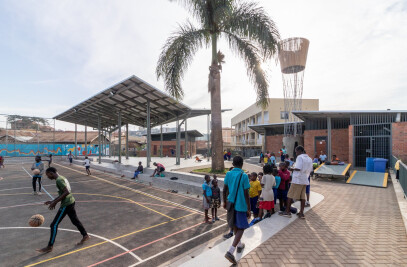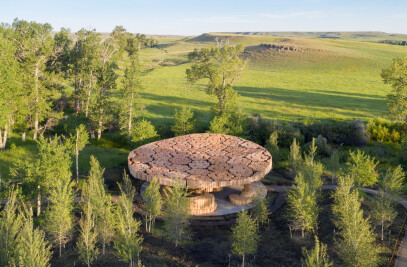Since 2000, the Serpentine Galleries annually commission an international architecture practice to design the Serpentine Pavilion in Kensington Gardens, London. In 2017, they chose Francis Kéré.
Taking inspiration from the great tree in his hometown of Gando under which members of the community meet to reflect on the day, Kéré’s design is based on creating this sense of community while connecting people with nature.
A great overhanging roof canopy made of steel and a transparent skin covers the entire footprint of Kéré’s Serpentine Pavilion, allowing sunlight to enter the space while also protecting it from the rain. Wooden shading elements line the underside of the roof, creating a dynamic shadow effect that changes with the movement of the sun and clouds.
The wall system is made of prefabricated wooden blocks assembled into triangular modules with slight apertures, giving a lightness and transparency to the building enclosure. The curved walls are split into four fragments, allowing four unique access points to Kéré’s Serpentine Pavilion. Completely detached from the roof canopy, these elements allow both the air and visitors to freely circulate.
At the centre of Kéré’s Serpentine Pavilion is a large opening in the canopy, creating an immediate connection to the sky. When it rains, the roof becomes a funnel channeling water into the heart of the structure. This rain collection acts symbolically, highlighting water as a fundamental resource for human survival and prosperity.
In the evening, the canopy becomes a source of illumination. Wall perforations give glimpses of movement and activity inside the pavilion to those outside. In this way, Kéré’s Serpentine Pavilion becomes a beacon of light, a symbol of storytelling and togetherness.
Following an extended run in London from June to November 2017, Kéré’s Serpentine Pavilion was sold to the Ilham Gallery in Kuala Lumpur, Malaysia.

































